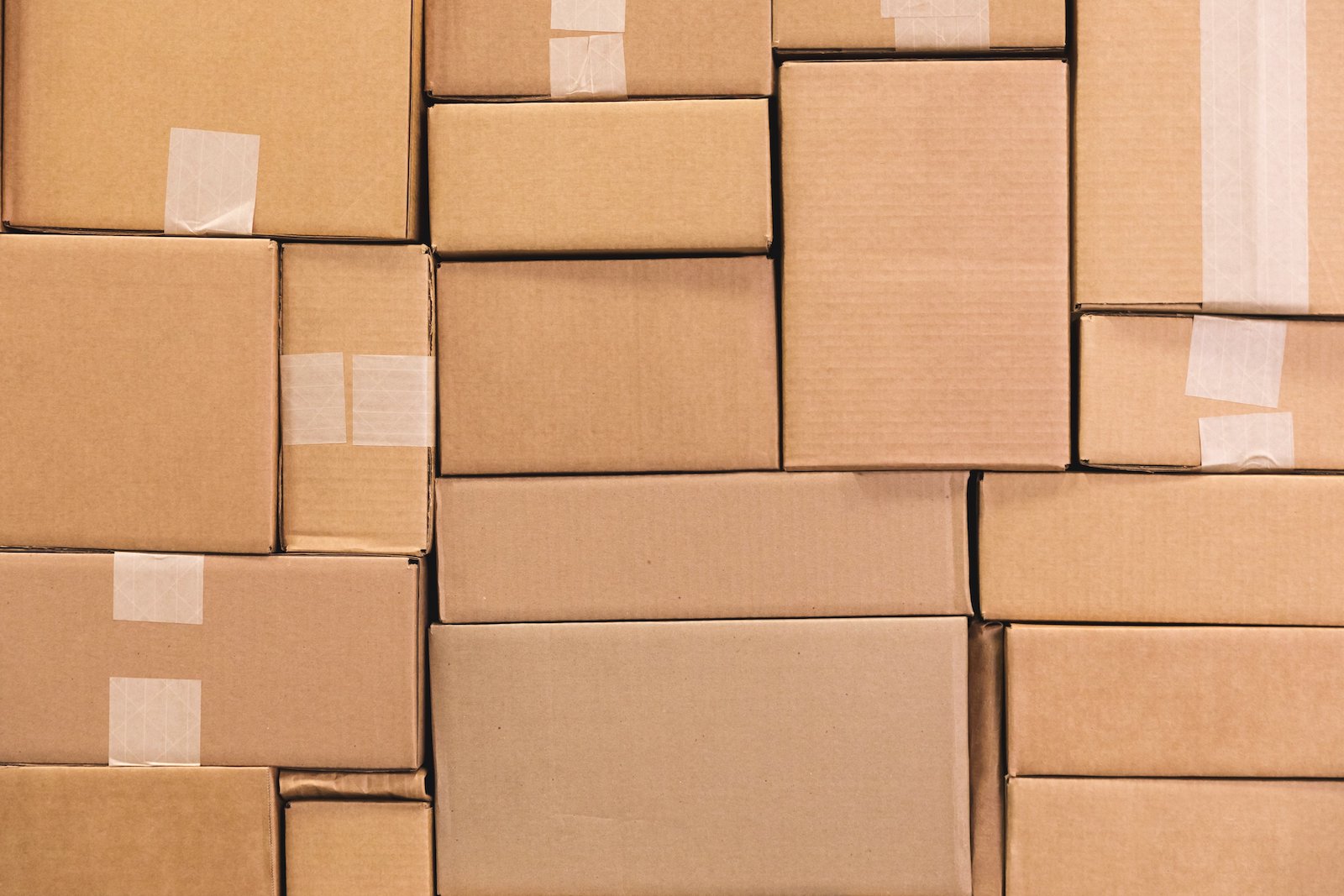Table of Contents
** Minutes
The downside of split shipments
ShipBob can help minimise split shipments and maximise customer satisfaction
You’ve likely ordered several products online at once only to find the order is incomplete when it arrived at your house. Your reaction may have gone something like this:
Didn’t I order more than this? Was there an error? Did they forget to send me something I already paid for?
While you likely got the remaining items from the order a bit later, receiving separate shipments can be a confusing experience.
Split shipments happen for a variety of reasons, from having inventory stored in different locations to being unable to fit all items in a single box.
In this article, we’ll explain why split shipments occur, FAQs about sending separate shipments for a single order, and the steps you can take to avoid this.
What is a split shipment?
A split shipment is when a single order containing multiple products is sent in separate shipments. The customer receives more than one package even though they ordered everything together.
Why are split shipments used?
While businesses should never aim to split shipments (unless they only sell very large products that couldn’t fit more than one in a box), mailing separate shipments for a single order may happen for the following reasons:
1. The products ordered are currently in different locations
When an ecommerce company has inventory in more than one location, each SKU may have differing stock levels across facilities.
If a single fulfilment centre doesn’t have the units needed to fulfil a single order containing multiple products, different warehouses may need to be utilised. One item may be fulfiled from one fulfilment centre, and the second item may be fulfiled from another.
Rather than waiting on one fulfilment centre to get more inventory, separate shipments from each fulfilment centre will ultimately get the products to the customer with faster delivery times.
With cargo and freight shipping, at times there may not be enough room on a single truck or plane for an entire order, and individual boxes may be transported and arrive separately. This can get complicated with customs forms when shipping internationally, so you must make sure each separate shipment has the appropriate documentation.
Similarly, if inventory is partially ready, it may be shipped in parts, starting with any pieces that are ready for shipment.
2. The customer needs to send different items to different locations
While this isn’t that common in ecommerce, a customer may want to split up individual items from a single large order into separate shipments so they are sent to different addresses. Most people will create unique orders for each new shipment, but it may be easier for customers to purchase gifts in a single order especially during the holidays.
You likely won’t see a split shipment option at checkout on the average Shopify store, but for large bulk orders of expensive items, it may be helpful for someone to enter a unique address for each item or separate shipment.
3. The items won’t all fit in a single package
The size of your items will determine whether you need to split shipments for a single order.
For example, an order of four tubes of mascara should easily fit and arrive in a single package. However, if you order four large suitcases, you wouldn’t expect to get one giant box the size of a couch — you would likely receive four individual boxes because each product takes up much more space. You also need to leave room for dunnage and packing materials, especially if you’re shipping fragile items.
Ecommerce brands must understand how dimensional weight affects shipping costs and use the right sized packaging (not too big, not too small). Smaller, lighter shipments are less expensive than large, heavy shipments (and there are surcharges for heavy weight and oversized shipments). However, sending separate shipments is also expensive.
The downside of split shipments
Here’s why you should aim to avoid sending separate shipments at all costs:
Extra packaging waste
Shipping two boxes instead of one wastes packaging and materials. This isn’t only costly for you, but the earth as well. You can always use eco-friendly packaging, but regularly having split shipments isn’t exactly on brand if you aim to be environmentally-conscious.
Higher shipping costs
The more shipments you send, the more money you will pay. If you generate two shipping labels for a single order, your cost per order will increase significantly.
It’s not only about volume though — depending on where the separate shipments originate, the final cost to the same destination may differ based on how USPS shipping zones work in the United States.
Let’s walk through an example:
- A customer lives in Florida and places a single order of two products, each weighing 4 pounds.
- Product A is in stock in a fulfilment centre in Florida.
- Product B is only in stock in a fulfilment centre in California.
- You can split the order and send separate shipments, so that Product A arrives quickly since it’s a more local delivery, and Product B arrives a few days after that.
- Product A will be shipped via USPS Priority Mail from Florida to the shipping destination in Florida, going to Zone 1 and costing $7.94.
- Product B will be shipped via USPS Priority Mail from California to the same shipping destination in Florida, but going to Zone 8 and costing $18.14.
Not only is it going to take longer to get Product A from California, but it will also cost $10.20 more than the shipment coming from Florida. If both products were in stock in the Florida fulfilment centre, you’d only have to pay $7.94. But by sending separate shipments, the total shipping cost for a single order is now $26.08.
If you wait for the ordered ecommerce inventory to be in the same fulfilment centre, your customers will have to wait a while, which might not sit well with them.
More unhappy customers
Receiving split shipments is not a great customer experience. If a customer gets half of their order one day and the second half a few days later, they may be confused at best and angry at worst. Alternatively, if you wait until inventory is replenished to send a complete order, your customer may have to wait weeks.
This can result in an increase in customer service inquiries, more bad reviews, and even higher inventory costs if you end up reissuing a new shipment because the customer said they never received that part of the order.
If sending split shipments is unavoidable, at the very least contact the customer to let them know they can expect multiple shipments so they aren’t surprised when they don’t receive their full order.
How to avoid split shipments
While split shipments may be inevitable at times, optimising your supply chain can help you prevent the need to split shipments and ensure it’s a rare event. Here are some measures you can take to reduce the likelihood of sending separate shipments:
Have enough stock at all times
Demand forecasting is hard to master but critical to manage as best you can. Ecommerce brands must do all they can to ensure they don’t run out of stock.
For example, ShipBob’s Analytics tool provides distribution metrics and gives you insights into:
- How much inventory you currently have on hand at each ShipBob fulfilment centre
- When you need to reorder inventory for each product before you run out and how many days of safety stock you have before you run out
- How your inventory levels will be affected if you run a flash sale
- How your sales are affected by different seasons and months
- How much money you would save on shipping if you changed the fulfilment centre location(s) of your inventory
Spitting your inventory across fulfilment centres to keep product close to your end customers can bring down shipping costs and transit times, but these facilities must always be stocked with your inventory for the model to work optimally.
Understand buyer behaviour
If you know your customers and their purchasing trends, you can improve your ecommerce logistics strategy to provide a better customer experience.
Think through the following questions:
- Where are your customers located? What is the average shipping zone you’re shipping to? Can you choose a more central location or distribute inventory to reduce shipping times and costs?
- Which products are frequently purchased together? Should you group any products together for upsells or bundles, or to increase your AOV? For example, if you sell protein powder, then shaker bottles might be a popular add-on item for new customers that should have corresponding stock levels.
- What is your customer LTV? Do customers come back and buy from you again? Should you offer subscription options (e.g., the same product delivered at the same time each quarter) or offer bulk discounts?
Give customers a choice
While this option isn’t doable for many direct-to-consumer brands that have occasional purchases from customers on their Shopify store, larger marketplaces that have single customers placing frequent orders can look into giving customers a choice of consolidating all of their orders into one shipment.
Amazon has done this to be more environmentally-conscious. This allows the customer to choose the option of having all purchases over a certain timeframe shipped together, rather than always getting the fastest shipping method. The customer may choose to wait longer to receive everything together over the more wasteful practice of separate shipments.
ShipBob can help minimise split shipments and maximise customer satisfaction
ShipBob is an ecommerce fulfilment provider that offers fast, affordable shipping to help brands drive revenue and scale their business. Our ever-growing network of fulfilment centres lets brands use the locations that make the most sense for their customer footprint.
When an order comes in, our software automatically chooses the fulfilment closest to the end consumer. This reduces shipping costs and leads to quicker deliveries. Our proprietary software helps you prevent stockouts so you won’t have to place orders on hold or split shipments.
If you have an order that has one or more items out of stock, you can choose to split the order to have the products that are available shipped. Once the missing product arrives at our fulfilment centre, then the rest of the order will be processed automatically. Just be sure to notify your customer that the order has been split and that they should expect two packages instead of one.
Conclusion
While split shipments aren’t always avoidable, you must do all you can to prevent them so your bottom line isn’t harmed. Reducing split shipments will make your retail supply chain more efficient, save you money on shipping costs, and reduce waste. By partnering with a 3PL like ShipBob, you can optimise your shipments, prevent split orders, and improve your profit margin.
Interested in ShipBob’s retail fulfilment services? Click the button below to learn more about how ShipBob can help with fulfilment and reduce split shipments.
Partial shipping FAQs
Is it cheaper to ship items separately or together?
Generally, splitting shipments into multiple packages is more costly because you have to generate two shipping labels and use two sets of packaging for a single order. When you have one package, there is less handling, less fuel used to transport it, and less packaging materials, resulting in lower costs. There are certain scenarios that make splitting shipments unavoidable, but ecommerce brands should try to avoid partial shipping when possible.
Is it cheaper to ship 1 big box or 2 smaller boxes?
It depends, but generally a good rule of thumb is the fewer boxes, the better. Generating two shipping labels is more expensive than one. Of course, this is ultimately dependent on your courier, the shipping service and method, the weight and dimensions of the packages, what you are shipping, and where it’s going. If you’re able to avoid partial shipments, you’ll likely save money.
What does partially shipped mean?
Partially shipped (or a split shipment) refers to a situation where a single order is split up into multiple packages. Partial shipments can occur for several reasons:
- Products being located in different places
- Certain products being available to ship now vs. on backorder
- Products not being able to fit in a single package



